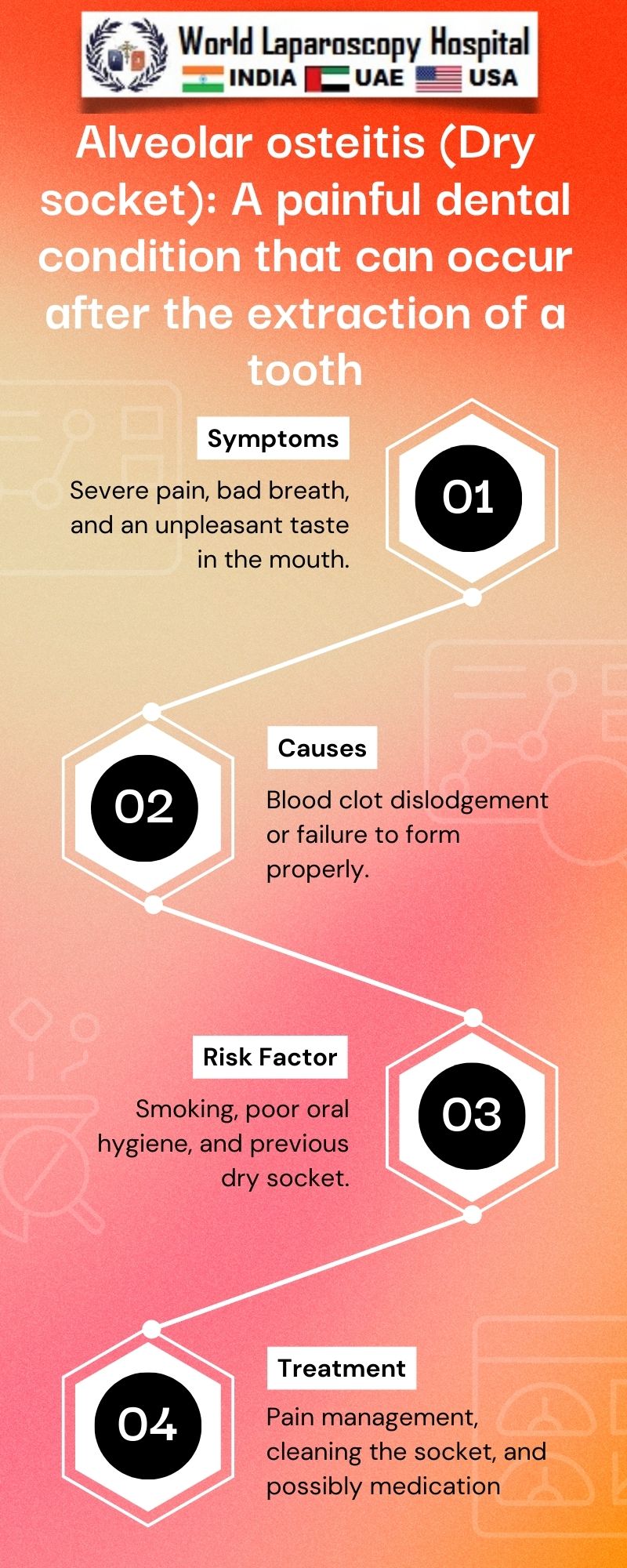Alveolar osteitis (Dry socket): A painful dental condition that can occur after the extraction of a tooth
Introduction
Alveolar osteitis, commonly known as dry socket, is a painful dental condition that can occur following the extraction of a tooth. While a relatively uncommon complication, it is one that can significantly impact a patient's quality of life during the post-operative period. Understanding the causes, symptoms, and management of dry socket is crucial for dental professionals to provide optimal care for their patients.

Anatomy and Physiology of the Alveolar Bone:
The alveolar bone is a specialized part of the jawbone that surrounds and supports the teeth. It is unique in its structure, being composed of both cortical and cancellous bone. The alveolar bone plays a crucial role in tooth support and is essential for maintaining dental health.
What is Alveolar Osteitis (Dry Socket)?
Alveolar osteitis, or dry socket, is a painful condition that occurs when the blood clot at the site of a tooth extraction fails to form properly or is lost prematurely. This exposes the underlying bone and nerves to air, food, and fluids, leading to inflammation and pain. Dry socket typically develops 2-5 days after a tooth extraction and is more common following the extraction of impacted mandibular molars.
Causes of Alveolar Osteitis:
Several factors can contribute to the development of dry socket. These include:
- Trauma to the extraction site during the extraction process
- Infection at the extraction site
- Poor oral hygiene
- Smoking or tobacco use
- Use of oral contraceptives
- History of previous dry socket
Symptoms of Alveolar Osteitis:
The most common symptom of dry socket is severe, throbbing pain that radiates from the extraction site and may extend to the ear, eye, or neck on the same side. Other symptoms may include:
- Bad taste or odor in the mouth
- Visible bone in the socket
- Swollen lymph nodes
- Fever
Diagnosis of Alveolar Osteitis:
Diagnosing dry socket is based on clinical signs and symptoms. Your dentist will examine the extraction site and may take x-rays to rule out other potential complications, such as infection or a retained root tip.
Treatment of Alveolar Osteitis:
The primary goal of treatment for dry socket is to manage pain and promote healing. This may include:
- Irrigation of the socket to remove debris and promote healing
- Placement of a medicated dressing in the socket to reduce pain and inflammation
- Prescription pain medication
- Antibiotics if infection is present
Prevention of Alveolar Osteitis:
Preventing dry socket is key, particularly in patients who are at higher risk. This can be achieved by:
- Following proper post-operative care instructions, including avoiding vigorous rinsing or spitting, and not using straws
- Maintaining good oral hygiene
- Avoiding smoking or tobacco use
- Using antibiotics or antimicrobial mouth rinses as prescribed
Conclusion:
Alveolar osteitis, or dry socket, is a painful complication that can occur following a tooth extraction. Understanding the causes, symptoms, and management of dry socket is essential for dental professionals to provide optimal care for their patients. By following proper post-operative care instructions and taking preventive measures, the risk of developing dry socket can be minimized, ensuring a smoother recovery process for patients.
| Older Post | Home | Newer Post |

